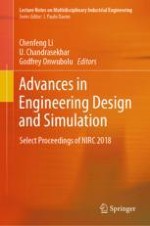2020 | OriginalPaper | Chapter
9. Computational Study on the Effect of Aft-Body Attachments on Base Drag Using Locked Vortex Flow Management Technique
Authors : Thippeswamy Sanjitha, Kailas S. Jagtap, Karthik Sundararaj, Prakash S. Kulkarni, Manoj Veetil, Arun Mallappa Bagewadi, Syed Sameer Mujaawar, Kothnur Narayanaswamy Ramyashree
Published in: Advances in Engineering Design and Simulation
Publisher: Springer Singapore
Activate our intelligent search to find suitable subject content or patents.
Select sections of text to find matching patents with Artificial Intelligence. powered by
Select sections of text to find additional relevant content using AI-assisted search. powered by
